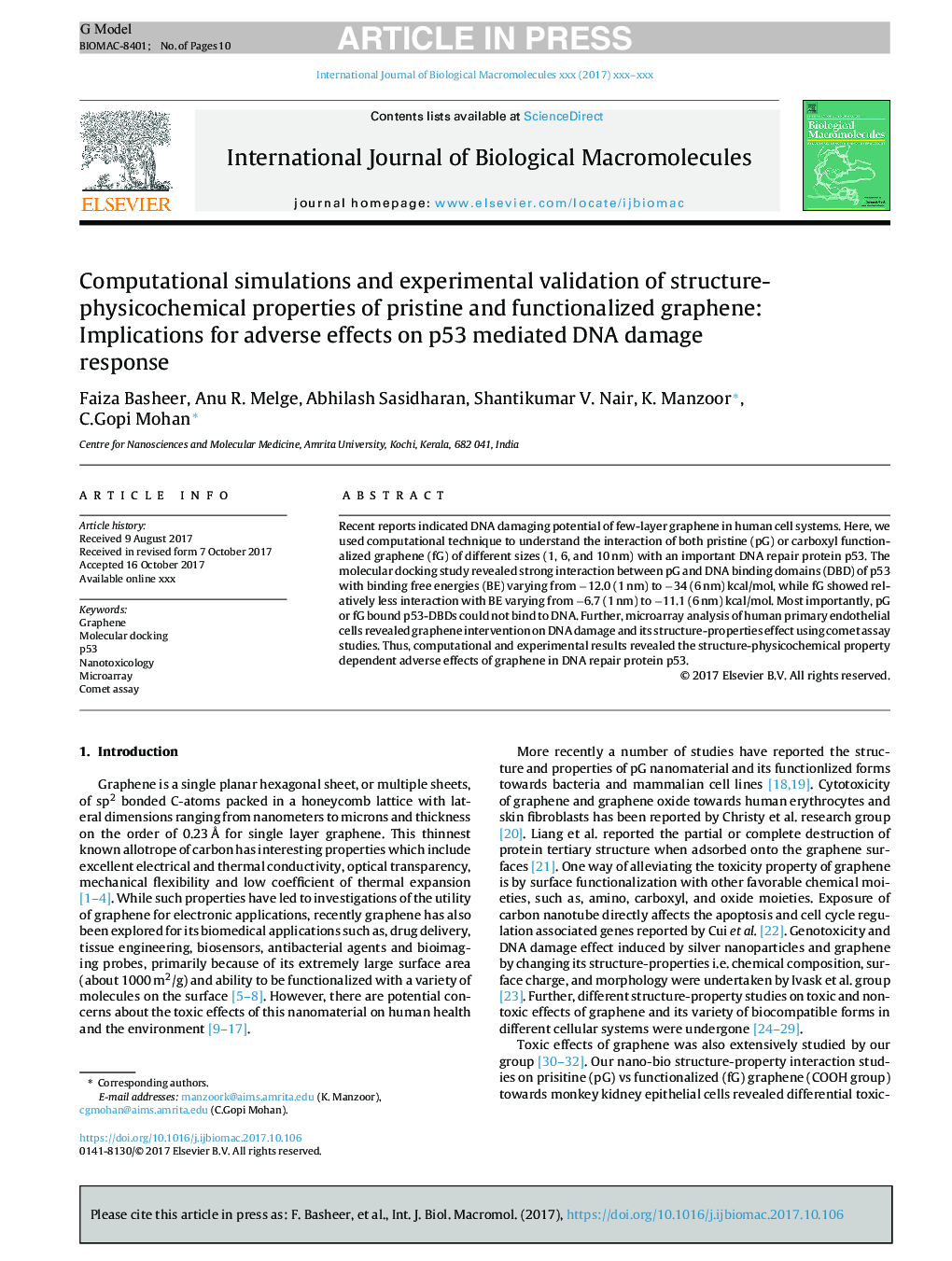| Article ID | Journal | Published Year | Pages | File Type |
|---|---|---|---|---|
| 8328080 | International Journal of Biological Macromolecules | 2018 | 10 Pages |
Abstract
Recent reports indicated DNA damaging potential of few-layer graphene in human cell systems. Here, we used computational technique to understand the interaction of both pristine (pG) or carboxyl functionalized graphene (fG) of different sizes (1, 6, and 10Â nm) with an important DNA repair protein p53. The molecular docking study revealed strong interaction between pG and DNA binding domains (DBD) of p53 with binding free energies (BE) varying from â12.0 (1Â nm) to â34 (6Â nm)Â kcal/mol, while fG showed relatively less interaction with BE varying from â6.7 (1Â nm) to â11.1 (6Â nm)Â kcal/mol. Most importantly, pG or fG bound p53-DBDs could not bind to DNA. Further, microarray analysis of human primary endothelial cells revealed graphene intervention on DNA damage and its structure-properties effect using comet assay studies. Thus, computational and experimental results revealed the structure-physicochemical property dependent adverse effects of graphene in DNA repair protein p53.
Related Topics
Life Sciences
Biochemistry, Genetics and Molecular Biology
Biochemistry
Authors
Faiza Basheer, Anu R. Melge, Abhilash Sasidharan, Shantikumar V. Nair, K. Manzoor, C.Gopi Mohan,
